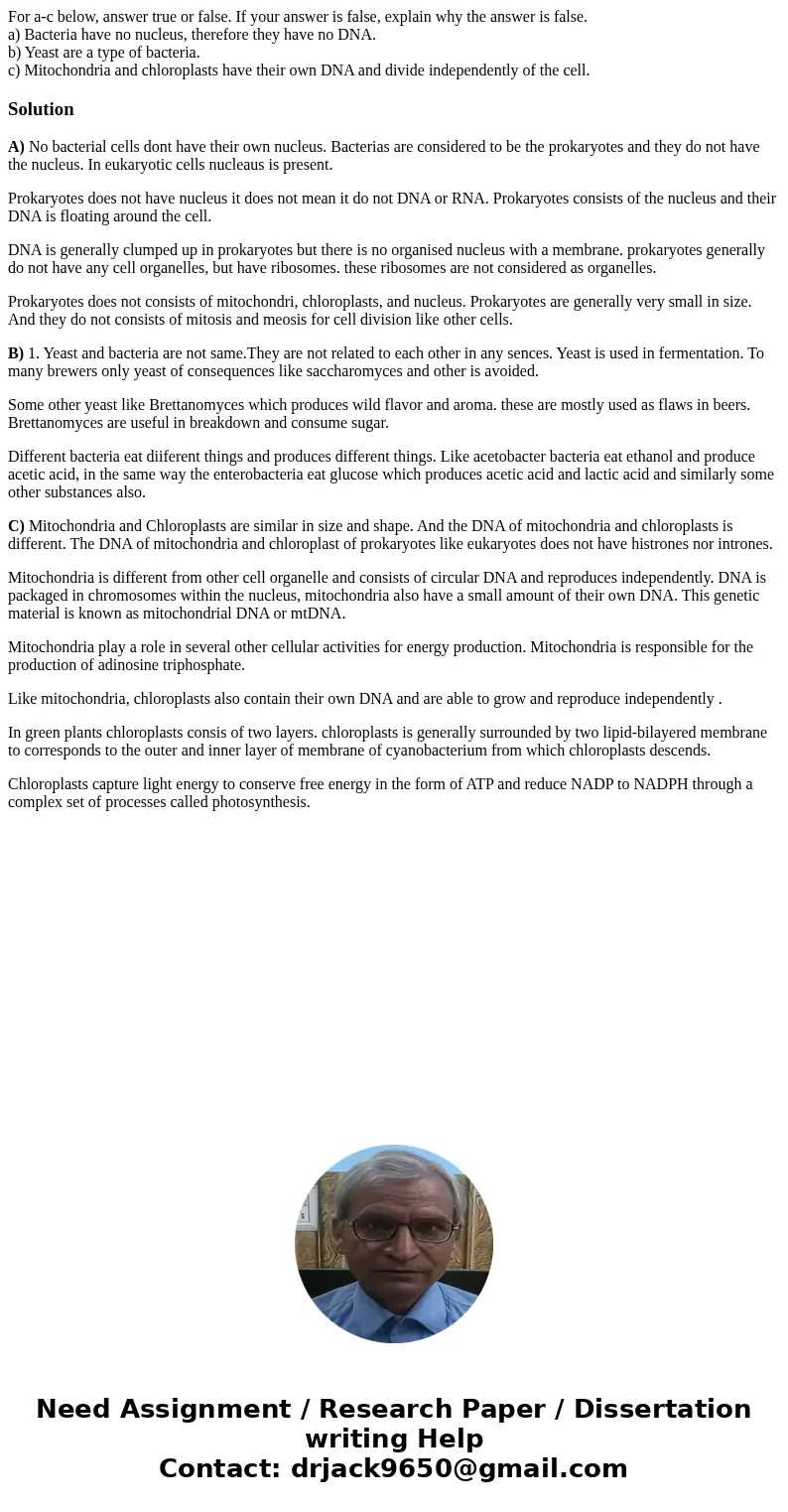For ac below answer true or false If your answer is false ex
For a-c below, answer true or false. If your answer is false, explain why the answer is false.
a) Bacteria have no nucleus, therefore they have no DNA.
b) Yeast are a type of bacteria.
c) Mitochondria and chloroplasts have their own DNA and divide independently of the cell.
Solution
A) No bacterial cells dont have their own nucleus. Bacterias are considered to be the prokaryotes and they do not have the nucleus. In eukaryotic cells nucleaus is present.
Prokaryotes does not have nucleus it does not mean it do not DNA or RNA. Prokaryotes consists of the nucleus and their DNA is floating around the cell.
DNA is generally clumped up in prokaryotes but there is no organised nucleus with a membrane. prokaryotes generally do not have any cell organelles, but have ribosomes. these ribosomes are not considered as organelles.
Prokaryotes does not consists of mitochondri, chloroplasts, and nucleus. Prokaryotes are generally very small in size. And they do not consists of mitosis and meosis for cell division like other cells.
B) 1. Yeast and bacteria are not same.They are not related to each other in any sences. Yeast is used in fermentation. To many brewers only yeast of consequences like saccharomyces and other is avoided.
Some other yeast like Brettanomyces which produces wild flavor and aroma. these are mostly used as flaws in beers. Brettanomyces are useful in breakdown and consume sugar.
Different bacteria eat diiferent things and produces different things. Like acetobacter bacteria eat ethanol and produce acetic acid, in the same way the enterobacteria eat glucose which produces acetic acid and lactic acid and similarly some other substances also.
C) Mitochondria and Chloroplasts are similar in size and shape. And the DNA of mitochondria and chloroplasts is different. The DNA of mitochondria and chloroplast of prokaryotes like eukaryotes does not have histrones nor intrones.
Mitochondria is different from other cell organelle and consists of circular DNA and reproduces independently. DNA is packaged in chromosomes within the nucleus, mitochondria also have a small amount of their own DNA. This genetic material is known as mitochondrial DNA or mtDNA.
Mitochondria play a role in several other cellular activities for energy production. Mitochondria is responsible for the production of adinosine triphosphate.
Like mitochondria, chloroplasts also contain their own DNA and are able to grow and reproduce independently .
In green plants chloroplasts consis of two layers. chloroplasts is generally surrounded by two lipid-bilayered membrane to corresponds to the outer and inner layer of membrane of cyanobacterium from which chloroplasts descends.
Chloroplasts capture light energy to conserve free energy in the form of ATP and reduce NADP to NADPH through a complex set of processes called photosynthesis.

 Homework Sourse
Homework Sourse